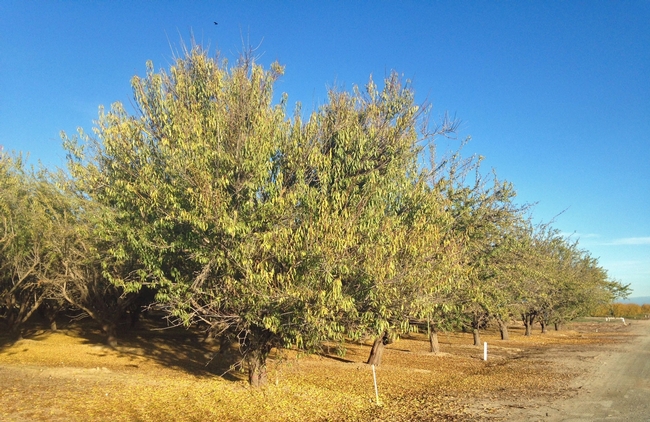
Saline accumulation in the orchard soil profile is a recurring headache. But it becomes more acute during droughts, when farmers use more groundwater – which is generally more saline than surface water – or their surface water supply is more saline than normal.
Salinity accumulates in the soil when the tree is growing quickly and almonds are developing throughout spring and summer. When water with dissolved salts is applied, the roots of the tree will exclude the salt, sucking up only water. As salt accumulates from successive irrigations, the tree must work harder to pull up water. The extra stress slows growth and yields drop.
“At this stage, the trees look healthy, but they're not reaching their full potential,” Doll said.
In time, however, salt can accumulate to toxic levels and the tree will no longer exclude the salt.
“The salt toxicity becomes apparent in older leaves, which turn brown along the margins, and eventually fall off the tree,” Doll said. “We saw quite a bit of this in Merced County this year, especially on sandier soils.”
The cure? More water. Winter rain can help leach salt out of the root zone. If California experiences another dry winter, farmers will have to apply groundwater to flush salt away from almond tree roots.
“Seventy-five percent of our almond orchards are OK when there is enough rain,” Doll said, “but some farmers must apply water in the winter even in normal years.”
Doll recommends farmers sample their soils in the fall at various depths to assess salinity in the root zone.
To wash out accumulated salts, enough water must be applied to fill the soil profile, he said. Once the profile is full, smaller quantities of water applied either through rain or irrigation will move salts below the root zone.
An initiative to improve California water quality, quantity and security is part of the UC Division of Agriculture and Natural Resources Strategic Vision 2025.